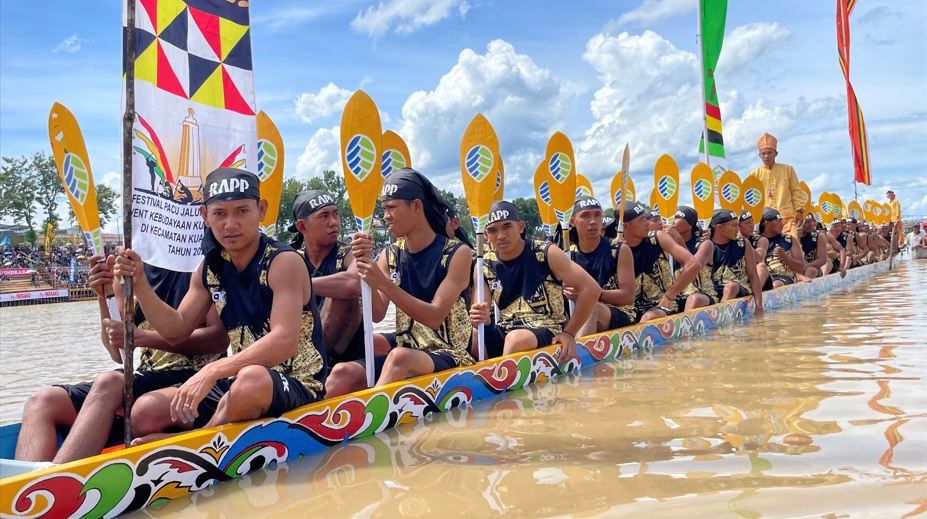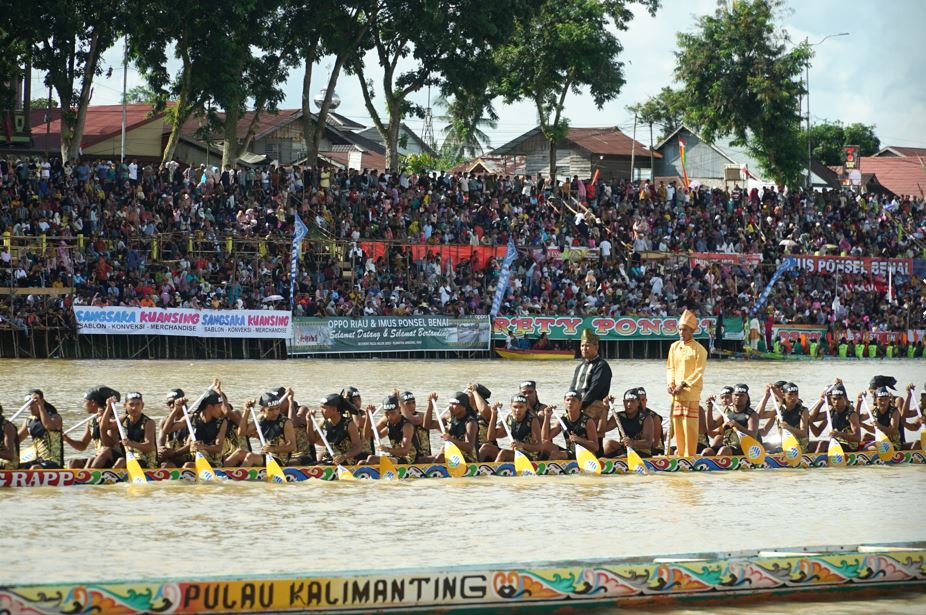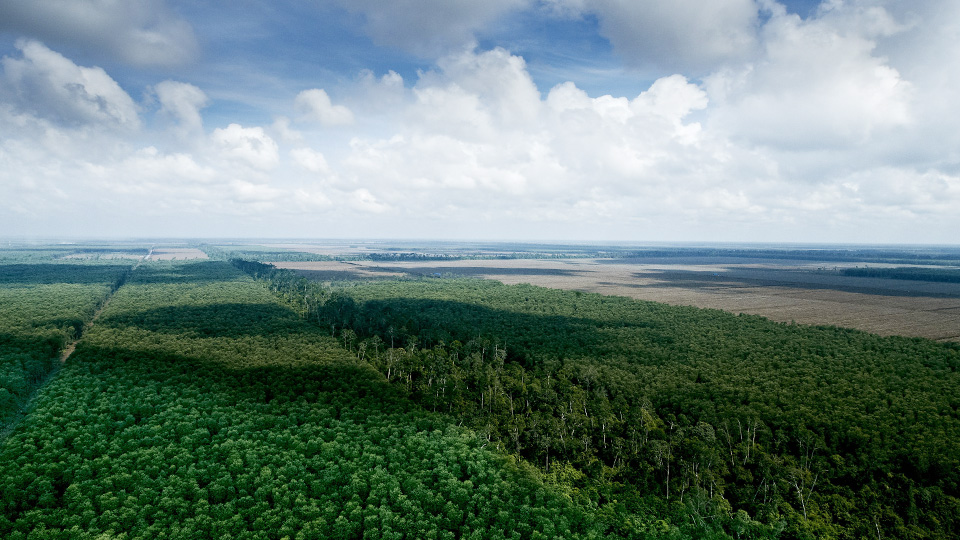Pacu Jalur: A Representation of Riau's Rich Cultural Heritage
- Details
What happens when a sporting event merges with a cultural treasure that dates back hundreds of years yet is still relevant today? That is Pacu Jalur. The rowing competition is traditional to the Kuantan Singingi Regency of Riau, Indonesia.
After a two-year break due to the pandemic, this tradition, conducted along the Batang Kuantan River, returned as a sign of the distinctiveness and peace of the Riau people. Let’s dig deeper into this cultural heritage!

Pacu Jalur’s History
Pacu Jalur was first established as a significant mode of transportation for residents of Rantau Kuantan, a region located near the Kuantan River, in the seventeenth century. The Kuantan River was the lifeblood of the area, and the people had little idea about land transportation. It was used for everything, from transporting goods to fishing, washing clothes, and even taking baths.
Jalur literally means "boat" in the native language of Riau. Many people used the boat to carry goods like bananas and sugar cane, due to its capacity to hold 40 to 60 passengers. Different boats emerged throughout time, each adorned with its own unique combination of decorative elements, including intricate carvings, colourful scarves, intricate rigging, and pretty accoutrements.
Over time, Jalur came to represent more than just a mode of transportation; it also became a symbol of the wealth and rank of its owners. This was because only nobles and regional authorities were allowed to ride the adorned Jalur.The boat’s exclusivity increased in proportion to the splendour of its furnishings.
It wasn't until the 18th century that locals started holding speed competitions, which are now known as Pacu Jalur.

The process of making Jalur
The primary component used in the construction of a Pacu Jalur boat is one of its distinguishing features. The planks used to construct the walkway all came from trees that were harvested under controlled circumstances. There are also several stages that must be reached before making a Jalur, those are:
- Rapek village/banjar or village meeting
Pak Tuo, also known as a village elder, plans to organise a group to build the path. The village shaman also provides guidance at this time, telling people where to locate forests to cut wood. - Looking for the right wood
When selecting a tree to use as a Jalur, care must be taken to choose one with significant spiritual significance. Balau tree, Mersawa tree, Meranti tree, Red Balam tree, Banio tree, Kure tree, Trembesi tree, and Kruing tree are only a few of the tree species that have been used by the community as route materials. - Manobang or cut down a tree
Pak Tuo will perform a worship ritual, including the making of gifts, to beg permission from the guardian of a tree with a trunk diameter of around 45 metres and a length of between 25 and 40 meters. - Chopping the wood
After the wood has been cut, the ends are trimmed off. All areas of the raw wood that will be shaped are cleaned throughout this procedure. - Measuring the wood
At this point in the process, the hull of the boat is determined after the wood is measured with a thread. This is accomplished by smoothing off the wood's surface from its base to its tip. The process usually takes around three days. - Scrapping the wood
Once the wood has been leveled, the next step is to dredge it to create holes of uniform thickness. This procedure usually takes three to seven days to complete. - Grinding or manggaliak
Grinding is the process of polishing the outside of the future track in order to give it a sleek, boat-like profile. Meanwhile, "manggaliak" denotes a concerted effort on the part of the community to bend the boat. After being turned upside down, the boat will have a sweeping arc from its bow to its stern. - Making holes
The boat will be drilled in order to create holes in it. The carpenter may use these holes as guides to ensure he gets an accurate measurement of the hull. The sleeve vents help keep the boat from bursting while being put in a hot environment. Later, hardwood would be used to patch up the openings. - Making seats
After the boat is a bit slim and light, the boat is stretched back to make lumps that serve as seats. - Forming the bow or rudder
After the bow has been shaped to a length of 1-1.5 meters, the rudder is made to a length of 2-2.5 meters. - Maelo Jalur or drawing Jalur back to the village
As soon as the Jalur’s bow and rudder are in place, it may be transported back to the village and declared halfway complete. Once again, numerous people will need to pull it together to complete this task. Up to five or six weeks may pass during this phase. - Maelo Jalur or drawing
When they get to the settlement, they'll smoke the Jalur for five hours while lying flat to make it seem nicer. After much planning and discussion, the villagers finally settle on a name for the boat, which will be used for the motif that will be carved into the side of the boat.
Pacu Jalur as sustainable tourism
APRIL was pleased to provide its support to the Pacu Jalur Festival once again, ensuring that it would be an exciting occasion for everybody. This is because Pacu Jalur is an example of sustainable tourism in action in Riau.
Sustainable tourism, as defined by the United Nations' World Tourism Organization (UNWTO), is "tourism that actually takes into consideration the economic, social, and environmental implications not only for the now but also for the future in order to fulfil the demands of tourists, industry, the environment, and the local community."
If we examine the defining features of Pacu Jalur as a cultural practice, we’ll see that it's more than simply a race or a test of rowing prowess. Pacu Jalur is an important part of the history and culture of the Riau people. It shows how they work together and respect nature, history, and tradition.
Wan Mohd Jakh Anza, General Manager of Stakeholder Relations at PT RAPP, said that the company strongly supports this oldest tradition in Riau: "Pacu Jalur allows us to let go of our yearning by reinvigorating the tourist business, which was hampered by the pandemic, so that it may flourish in a sustainable way. The Pacul Jalur Festival is one of Riau's cultural heritages; hence, we are pleased to be able to promote it to tourists."
Not only does the festival draw in visitors from all over the globe, which boosts the local economy, but it also gives people a chance to deepen their ties to their cultural heritage and pass it on to the next generation.
More Articles






